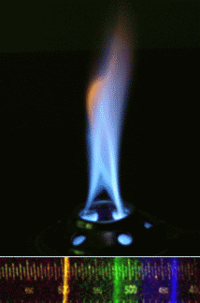
Photo from wikipedia
Abstract Methane (CH4), a key gaseous product of coal–oxygen reactions that severely pollutes the atmosphere and is therefore a health hazard. The microcharacteristics of CH4 emission during coal spontaneous combustion… Click to show full abstract
Abstract Methane (CH4), a key gaseous product of coal–oxygen reactions that severely pollutes the atmosphere and is therefore a health hazard. The microcharacteristics of CH4 emission during coal spontaneous combustion (CSC) were investigated under five oxygen concentrations, six particle sizes, three coal ranks, and five heating rates. A novel temperature-programmed simulation was developed to investigate the combustion characteristics. In addition, microcharacteristics were studied using in situ Fourier transform infrared (FTIR) spectroscopy. Surface characteristics, namely the specific surface area and pore size distribution, were analysed. Four types of active functional groups were observed using the FTIR spectrometer. Moreover, the key functional groups that contributed to CH4 gaseous products were determined through grey correlation analysis. The results revealed that the carbonyl group was the most active functional group during low-temperature oxidation. Furthermore, the CH4 concentration increased gradually during low-temperature oxidation. During high-temperature oxidation, the CH4 concentration increased rapidly. The reaction of carbonyl compounds and aliphatic hydrocarbons was mainly responsible for CH4 formation.
Journal Title: Energy
Year Published: 2020
Link to full text (if available)
Share on Social Media: Sign Up to like & get
recommendations!